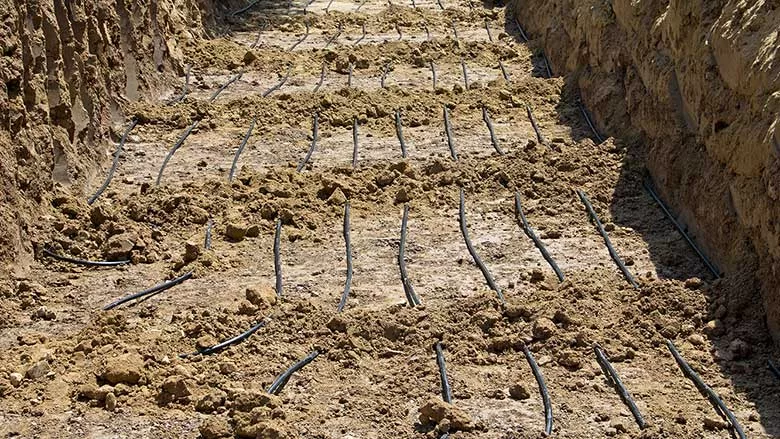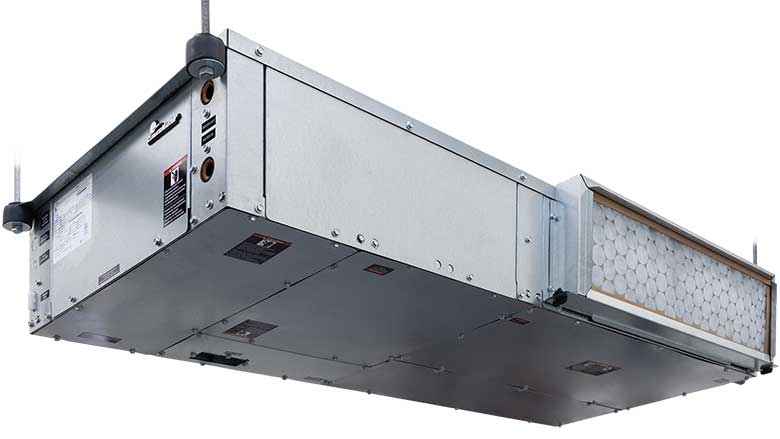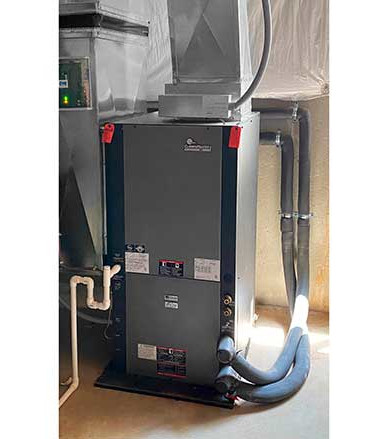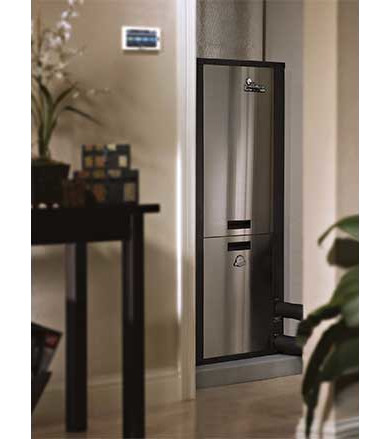IRA reduces cost barriers for geothermal heating and cooling
Tax credits, rebates and accelerated depreciation help make geothermal a more attractive option.

To promote the adoption of energy-efficient technologies, the Federal government provides significant tax incentives, including the Energy Investment Tax Credit (ITC) and the Modified Accelerated Cost Recovery System (MACRS), which can significantly offset the installation costs of geothermal heat pumps. Photos courtesy of SimplyCreativePhotography/iStock/Getty Images Plus.

To promote the adoption of energy-efficient technologies, the Federal government provides significant tax incentives, including the Energy Investment Tax Credit (ITC) and the Modified Accelerated Cost Recovery System (MACRS), which can significantly offset the installation costs of geothermal heat pumps. Photos courtesy of SimplyCreativePhotography/iStock/Getty Images Plus.
Despite the efficiency and savings of geothermal heating and cooling, upfront costs have historically hindered widespread adoption. Drilling or trenching for the installation ground loops add to the initial investment in comparison to traditional HVAC systems. However, the Inflation Reduction Act of 2022 has delivered good news that is transforming the industry and easing previous cost barriers in the form of federal income tax credits and accelerated depreciation deductions.
Geothermal heat pump efficiency and sustainability
Geothermal heat pumps (GHPs) tap into the constant temperature of the Earth to provide both heating and cooling in a highly efficient manner. As concerns about climate change and the need for sustainable energy solutions grow, more and more businesses are looking towards more sustainable methods of regulating their buildings' temperatures. These systems use the earth's relatively constant underground temperature to reduce the electrical energy required to provide heating, cooling and even water heating.
The advantages of geothermal heat pumps (GHPs) for commercial buildings are numerous. One of the most significant benefits is their energy efficiency. Traditional heating and cooling systems need to generate heat, which requires considerable energy. Conversely, GHPs only need to transfer heat, which uses significantly less energy. According to the EPA, geothermal heat pump systems can reduce energy usage by 30% to 60%, substantially reducing utility costs, which is an attractive prospect for many businesses.

ClimateMaster Tranquility Ceiling Unit Heat Pump. | Image courtesy of ClimateMaster
Understanding how geothermal systems work
Understanding how GHPs work is fundamental to appreciating their value, especially in commercial building settings. The Earth’s crust, below the frost line, maintains a constant temperature throughout the year, which averages around 10° to 16° C (50° to 60° F). The GHP system leverages this steady temperature by exchanging heat with the ground via a network of pipes filled with a circulating fluid, known as a ground loop.
Heating mode
In heating mode, the geothermal heat pump circulates a heat-transfer fluid through a ground loop to absorb heat from the earth. This heat is transferred to a refrigerant in the heat pump. The heated refrigerant is then compressed, increasing its temperature. This high-temperature refrigerant heats air or water for business use. After releasing its heat is returned to the heat exchanger to continue removing heat to absorb more heat from the ground.
Cooling mode
In cooling mode, the heat pump absorbs heat from the indoor air and transfers it to the refrigerant. The hot refrigerant is compressed, raising its temperature further and then circulated to the ground loop
where it releases its heat into the earth. The refrigerant is returned to the heat exchanger to continue removing heat from the building.
Further, GHPs are known for their longevity and minimal maintenance needs. The indoor components of a GHP can last over 25 years, while the ground loop can last for over 50 years. This, coupled with fewer moving parts, makes geothermal systems reliable and reduces the need for frequent maintenance or replacements.
In addition to their practical advantages, geothermal heat pumps also have significant environmental benefits. Because they use renewable energy from the ground, they produce fewer greenhouse gases compared to conventional HVAC systems. This can help businesses reduce their carbon footprint and contribute to sustainability goals.
How the IRA reduces cost barriers
To promote the adoption of energy-efficient technologies, the Federal government provides significant tax incentives, including the Energy Investment Tax Credit (ITC) and the Modified Accelerated Cost Recovery System (MACRS), which can significantly offset the installation costs of geothermal heat pumps.
The ITC is a federal tax credit available for businesses that install geothermal heat pumps. The ITC provides 30% to 50% credit for systems that begin construction through the end of 2032. This means that businesses can subtract the applicable percentage of their system installation costs from their federal tax liability, effectively reducing the overall cost of their geothermal installation. Notably, the ITC applies to the total cost of the system, including both equipment and installation expenses.


LEFT: ClimateMaster’s Tranquility with vFlow variable water flow technology breaks new ground in efficiency by approaching 30 EER part load cooling and 4.8 COP part load heating for ground loop applications, the company says. The heat pump’s Hot-Water Generator further increases operating cost savings by pre-heating hot water for domestic use. RIGHT: ClimateMaster’s Trilogy water-to-air closet heat pump features variable speed technology matched with communicating controls and a micro-channel air coil to deliver efficiency ratings of 45 EER+. | Image courtesy of ClimateMaster
MACRS, on the other hand, allows businesses to recover investments in certain property through depreciation deductions. For geothermal heat pump systems, businesses can take advantage of a five-year depreciation schedule. The fast-track depreciation reduces the time it takes for businesses to recover their investment, further improving the financial feasibility of these projects.
In the first year, businesses can elect to claim bonus depreciation. As of 2023, this bonus depreciation is set at 80% for qualified properties, allowing businesses to deduct 80% of the entire cost of the system (less 50% of the ITC deduction) in the first year, thereby reducing taxable income. This provision is scheduled to reduce to 60% in 2024 and drop to 0% in 2027.
Moreover, it's worth noting that these two incentives can be used together, allowing businesses to claim both the ITC and MACRS for the same system, creating a substantial financial incentive for installing geothermal heat pumps.
Seeing the IRA is believing
To illustrate, consider a hypothetical commercial building owner who installs a geothermal heat pump system at a cost of $1,000,000 and satisfies the requirements to receive a 40% credit. With the ITC, they could potentially receive a $400,000 tax credit if they begin construction before the end of 2023. Then, using MACRS, they could potentially write off the entire 80% of the investment in the first year, reducing their taxable income significantly.
However, the coordination between ITC and MACRS can be complicated as the amount of depreciation is required to be reduced by half of the ITC claimed, so the business in the above example would only be able to depreciate $800,000 of their initial investment ($1,000,000 - $400,000/2).
With all these provisions, it's clear that the federal government is providing significant incentives for businesses to invest in geothermal heat pumps. By taking advantage of these programs, businesses can contribute to energy conservation and climate change mitigation, while also offsetting initial investment. It is, however, important to consult with a tax professional or a specialist in energy-related tax issues to ensure all the nuances and conditions of these incentives are fully understood and properly applied.
New contractor opportunity
With qualifying tax credits of up to 50%, tax rebates, accelerated depreciation combined with local rebates and incentives, the IRA is accelerating geothermal adoption on a national scale. This accelerated transition to clean and efficient heating and cooling technologies has also fueled new opportunities and profit centers for HVAC contractors, and it appears the momentum for growth is just beginning.
Geothermal installations require specialized knowledge and skills, presenting an opportunity for plumbing and HVAC contractors to differentiate themselves in the market. The businesses acquiring expertise in geothermal systems and offering installation and maintenance services are tapping into a growing market segment and attracting environmentally conscious customers.
To summarize, the use of geothermal heat pumps in commercial buildings presents a viable and efficient alternative to conventional heating and cooling systems. These systems not only offer cost and energy savings but also contribute to environmental sustainability. As the world continues to look for ways to combat climate change and reduce greenhouse gas emissions, the use of technologies like geothermal heat pumps is likely to become increasingly prevalent in commercial settings.
Free geothermal resources for IRA guidance
You can find additional information along with free tax guides and resources to navigate the benefits of the Inflation Reduction Act for geothermal heating and cooling systems at: www.climatemaster.com. You can also send email requests for more information to me at jparsons@climatecontrolgroup.com.
Looking for a reprint of this article?
From high-res PDFs to custom plaques, order your copy today!







